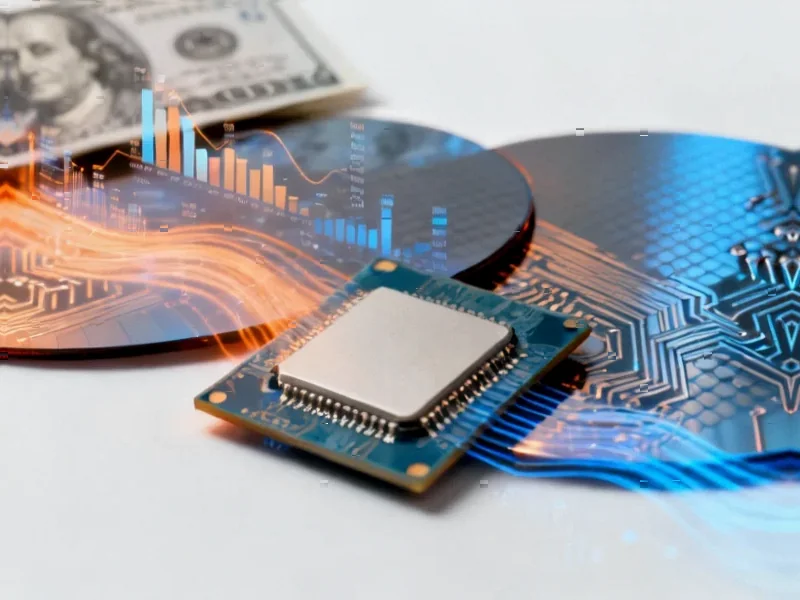According to DIGITIMES, when Nvidia CEO Jensen Huang visited South Korea in late October, a viral “chimaek” dinner on October 30 featuring Samsung Chairman Lee Jae-yong and Hyundai Executive Chair Chung Eui-sun captured global attention. However, SK Hynix’s absence from the informal gathering raised questions, given its position as Nvidia’s largest supplier of high-bandwidth memory for AI chips. The following day at the APEC Summit on October 31, Nvidia announced an expanded partnership with SK Group to build an AI factory deploying more than 50,000 GPUs, scheduled for completion in late 2027. The collaboration focuses on developing next-generation HBM, AI-driven chip design using Nvidia’s technologies, and digital transformation across SK subsidiaries. This strategic sequencing reveals how business priorities often differ from public perception.
Table of Contents
The HBM Dominance Behind the Scenes
What the viral dinner photos didn’t show was SK Hynix‘s entrenched position in the most critical component of AI infrastructure: high-bandwidth memory. While Samsung enjoys broader consumer brand recognition, SK Hynix has quietly dominated the HBM market that powers Nvidia‘s AI accelerators. The company reportedly commands over 50% market share in HBM3, the current generation used in Nvidia’s highest-performance data center GPUs. This isn’t just supplier-customer relationship—it’s technological codependency. Nvidia’s AI leadership depends on SK Hynix’s memory innovation as much as SK Hynix’s growth relies on Nvidia’s architectural roadmap.
Strategic Timing Over Photo Ops
The logistics explanation—Chairman Chey Tae-won’s APEC commitments 250 kilometers away—masks a deeper business intelligence. In global technology partnerships, substance consistently outperforms symbolism. While the chimaek gathering generated social media buzz, the AI factory announcement represents tangible infrastructure that will shape Korea’s technological sovereignty for decades. The 50,000-GPU facility isn’t just another data center—it’s a strategic asset that positions SK Group at the center of semiconductor research, development, and production ecosystems. This mirrors similar Nvidia partnerships in Taiwan and Japan, where AI factories become national infrastructure priorities.
The AI Factory Ecosystem Imperative
The late-2027 timeline for the AI factory completion reveals the long-term nature of this partnership. Unlike consumer electronics cycles that measure success in quarters, semiconductor infrastructure requires multi-year planning horizons. The integration of Nvidia’s Omniverse for digital twins and CUDA-X for chip design represents a fundamental shift in how memory manufacturers approach R&D. SK Hynix isn’t just building better memory—they’re building AI systems to design better memory, creating a virtuous cycle of improvement. This approach could compress development cycles that traditionally take 3-5 years down to 18-24 months, providing crucial competitive advantages.
Competitive Landscape Implications
The subtle dynamics of this visit reveal ongoing tensions in the Korean tech ecosystem. While Samsung pursues broader AI partnerships across multiple fronts, SK Hynix appears to be doubling down on its memory specialization with deeper Nvidia integration. This creates an interesting divergence: Samsung’s strategy resembles Apple’s vertical integration approach, while SK Hynix embraces the TSMC model of deep specialization within a broader ecosystem. Both approaches have merit, but in the near term, SK Hynix’s focused partnership may deliver more immediate returns in the AI gold rush, while Samsung’s broader ambitions could pay dividends in the AI-enabled device era.
Execution Risks and Market Realities
Despite the promising announcement, significant execution risks remain. The AI factory’s 2027 completion timeline means it will serve markets and technologies that don’t yet exist. Memory technology cycles are notoriously volatile, and the HBM market could look radically different in three years. Additionally, the partnership’s success depends on continued alignment between Nvidia’s GPU architecture roadmap and SK Hynix’s memory development—a coordination challenge that has derailed less mature partnerships. The massive scale (50,000 GPUs represents approximately $1.5 billion in hardware alone) also creates significant operational complexity that could delay the projected benefits.
Beyond 2027: What’s Next
Looking beyond the immediate announcement, this partnership signals Korea’s strategic response to global AI infrastructure competition. The SK-Nvidia collaboration represents a counterweight to similar initiatives in the United States, Taiwan, and Japan. For SK Hynix specifically, the AI factory provides a platform to transition from being a component supplier to becoming an AI solutions provider. The integration of digital twins and AI agents across 40,000 employees could create operational efficiencies that extend beyond semiconductor manufacturing into broader industrial applications. This positions SK Group not just as a memory champion, but as Korea’s answer to the industrial AI transformation sweeping global manufacturing.



